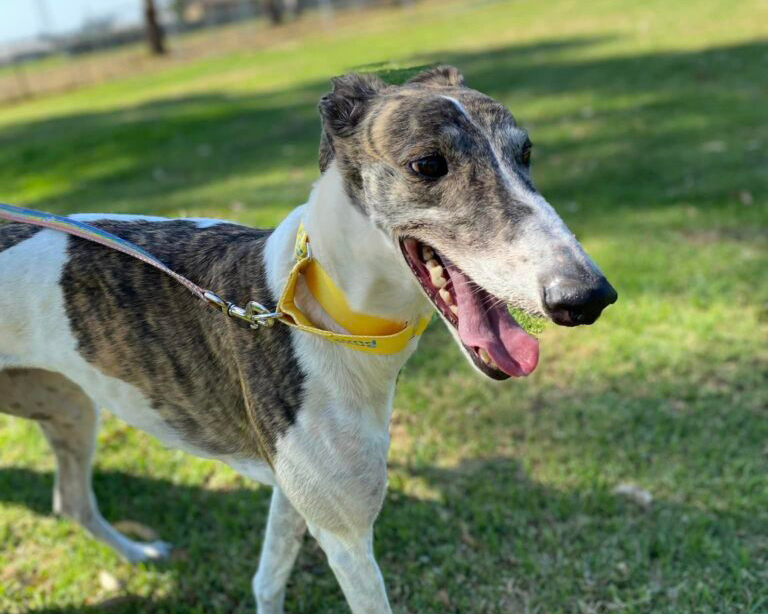
Greyhound Rescue recommends waiting 14 days before taking your hound on a walk when they first arrive in their new home. A walk too early in their journey to pet life can cause unnecessary stress in an already stressful situation, leading to heightened anxiety, reactivity and emotional responses. You can read more on why we recommend waiting here.
When the time does come for your first walk, it’s important to be prepared. Arm yourself with the tools necessary to make it the most enjoyable experience possible for both you and your hound.
Here are our recommendations:
Ahead of time:
- Practise walking on the lead in your yard or a room in the house. This helps your hound learn to follow you and is a great way to build communication and confidence while your hound is decompressing from their transition into your home (if you have adopted a hound from us, read the ‘follow me’ game that you would have received in your hound’s resume).
- You can also practise walking on the lead in other areas outside the house, such as in your driveway.
On your walk:
- When going on your first walk, keep it short (10 to 15 minutes is a good amount).
- Try to avoid busy areas or busy times of the day.
- It’s best to walk in a loop, rather than to a certain point and then turn back. Your hound is most likely curious and may have never been on a proper walk before. A sudden change in direction may cause them to freeze, and as they will still be learning to follow your guidance they may not understand why.
- Try to avoid greeting other dogs on your first several walks. Your hound is still learning and adjusting to a big change. Greeting other dogs too soon could be stressful for them.
- Avoid walking during hot weather, early morning or late evening walks are best to beat the heat.
- Make sure your hound is fitted with appropriate equipment.
Monitor your hound’s signals:
- Watch their body language and look out for signs of stress. If they are displaying signals that they are overwhelmed, it’s best to cut the walk short and get them home. This article by the RSPCA has a great summary of signs to look out for.
- If your hound has a stressful experience while out on a walk (for example, a lengthy freezing episode or an off lead dog giving them a fright), give them a minimum of 48 hours to decompress from the stressful event before resuming walks again. During this time, provide them with enrichment, games or simply let them chill out.
- Make sure that you stay at a distance from other stimuli where your dog is comfortable – once they’ve had that moment of fear they’re no longer learning. This is referred to as your hound’s “threshold”- the point at which they are no longer comfortable. It is important to try and keep your dog below their threshold as once they’re already reacted they are not in learning mode. Keep your distance and make it a positive time for your hound.The Engage-Disengage Game is a great tool to start with early on.
- Take it slow! They don’t need to go for a walk every day while they are learning, start by walking a few times a week, building up to every other day, then when your hound has the confidence you can begin daily walks.
Have treats with you:
- Bring lots of high-value treats (like BBQ or plain cooked chicken)! Not only could this help you if you hound freezes, but it’s also a great idea to reward them for calm behaviours. This will help your hound learn how to respond to certain stimuli when out and about, such as; big truck passes = treats, train horn goes off = treats, walking past another dog on the other side of the road = treats, looks up at you / the handler (this is also known as a “check in”) = treats
- If your hound won’t take any treats, it could be that they are already over threshold. In that case, be patient, and once home give them 48 hours off from walks to decompress. If you believe they aren’t taking treats because they aren’t food motivated, work out what else you can take. Perhaps it’s not their favourite treat, or they may be more responsive to a toy.
- If your hound is wearing a muzzle, which we recommend at this early stage, it can be tricky to hold the lead tightly and get the treats to them. We’ve put together some tips here on how to ensure easy, timely delivery of the treat.
Most importantly, attention is key. Minimising time on the phone, paying attention to surroundings and practising good lead handling are all key to successful walks together.
If you find yourself requiring some extra help, you can always get in touch with your Adoption Coordinator for advice.

